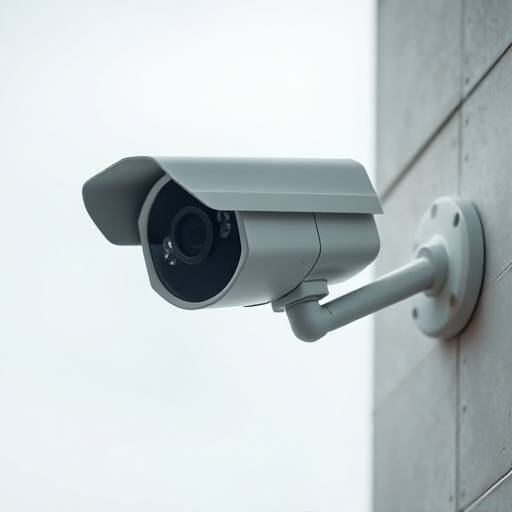A Solar Powered Fake Camera Setup offers an affordable, effective security solution. Realistic cameras with LED indicators and durable housing act as deterrents, powered by solar panels for 24/7 monitoring. Strategically placed in vulnerable areas, they provide a 360-degree view without complex wiring or high costs. However, deployment requires careful consideration of privacy laws and potential ethical implications.
“Uncover the power of a Solar-Powered Fake Camera Setup to enhance your home or business security. This comprehensive guide explores the ins and outs of these innovative deterrents, from understanding their solar energy efficiency to strategically placing them for maximum impact. Learn about key components, assembly, and ethical considerations. Discover how these fake security devices can deter criminals while navigating legal implications. Boost your security game with our detailed breakdown.”
- Understanding Solar-Powered Fake Camera Setup
- Choosing the Right Location for Maximum Deterrence
- Components and Assembly: A Step-by-Step Guide
- Ethical Considerations and Legal Implications Explored
Understanding Solar-Powered Fake Camera Setup
A Solar-Powered Fake Camera Setup is a clever, cost-effective way to enhance security without breaking the bank. These devices are designed to mimic real cameras, often with intricate details like LED indicators and realistic housing, making them an effective deterrent for potential intruders. The solar power feature adds to its appeal; it’s environmentally friendly and requires minimal maintenance.
Unlike traditional surveillance systems, these fake cameras draw energy from sunlight during the day, storing it in a rechargeable battery that keeps it operational at night or on cloudy days. Their wireless nature allows for easy placement anywhere, from windowsills to trees, providing a 360-degree view of your surroundings. Understanding how these solar-powered setups function can empower homeowners and businesses alike to take proactive steps towards enhancing their security without the hefty investment typically associated with traditional monitoring systems.
Choosing the Right Location for Maximum Deterrence
When setting up a solar-powered fake camera setup for enhanced security, selecting the optimal location is key to achieving maximum deterrence. Placement should strategically consider areas vulnerable to potential threats, such as entry points, parking lots, or dark corners of your property. By installing these realistic-looking devices in visible locations, you create an illusion of constant surveillance, significantly discouraging would-be intruders.
The right spot can transform into a powerful deterrent without the need for extensive wiring or complex setups. Solar-powered cameras offer the added benefit of being environmentally friendly and self-sufficient, ensuring they remain active and vigilant day and night, rain or shine. This strategic use of technology enhances your home or business’s security while keeping the process simple and cost-effective.
Components and Assembly: A Step-by-Step Guide
Setting up a solar-powered fake camera setup involves several key components that work together to create an effective deterrent for potential intruders. Start by assembling the main body, which typically includes a housing for the solar panel and a pole or mount for positioning the camera at the desired height. Ensure all parts are securely attached following the manufacturer’s instructions.
Next, install the solar panel in a location where it can receive unobstructed sunlight throughout the day. The panel should be angled appropriately to capture maximum sun exposure. Connect the panel to the battery, which will store energy for use during periods of low or no sunlight. Once powered, attach the camera and adjust its view to cover the area you wish to monitor. Remember to position it strategically to deter potential thieves while ensuring it blends in with the environment.
Ethical Considerations and Legal Implications Explored
The deployment of a solar-powered fake camera setup raises several ethical considerations and legal implications that must be carefully navigated. While these devices can serve as deterrents, there’s a fine line between private security and invasion of privacy. It’s crucial to ensure that the use of such setups does not violate individual rights or create an atmosphere of surveillance that could chafe against societal norms.
Legally, the installation of fake cameras must comply with local laws regarding privacy, surveillance, and data protection. Regulations like the General Data Protection Regulation (GDPR) in Europe or the California Consumer Privacy Act (CCPA) in the U.S. provide frameworks to safeguard personal information. Property owners considering solar-powered fake camera setups should consult legal experts to understand their responsibilities and avoid potential legal repercussions stemming from improper use or non-compliance with privacy laws.
A well-placed solar-powered fake camera setup can significantly enhance home or business security, acting as a powerful deterrent for potential intruders. By strategically selecting locations and assembling these devices correctly, you can create an effective surveillance system without the need for complex wiring or costly infrastructure. However, it’s crucial to consider ethical implications and stay within legal boundaries, ensuring that your use of fake cameras respects privacy rights and complies with local regulations. With proper implementation, solar-powered fake camera setups offer a practical and cost-efficient security solution for modern times.
